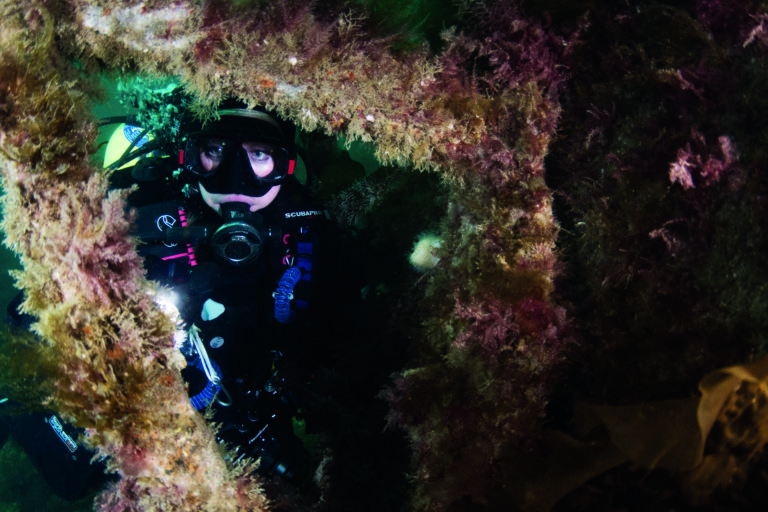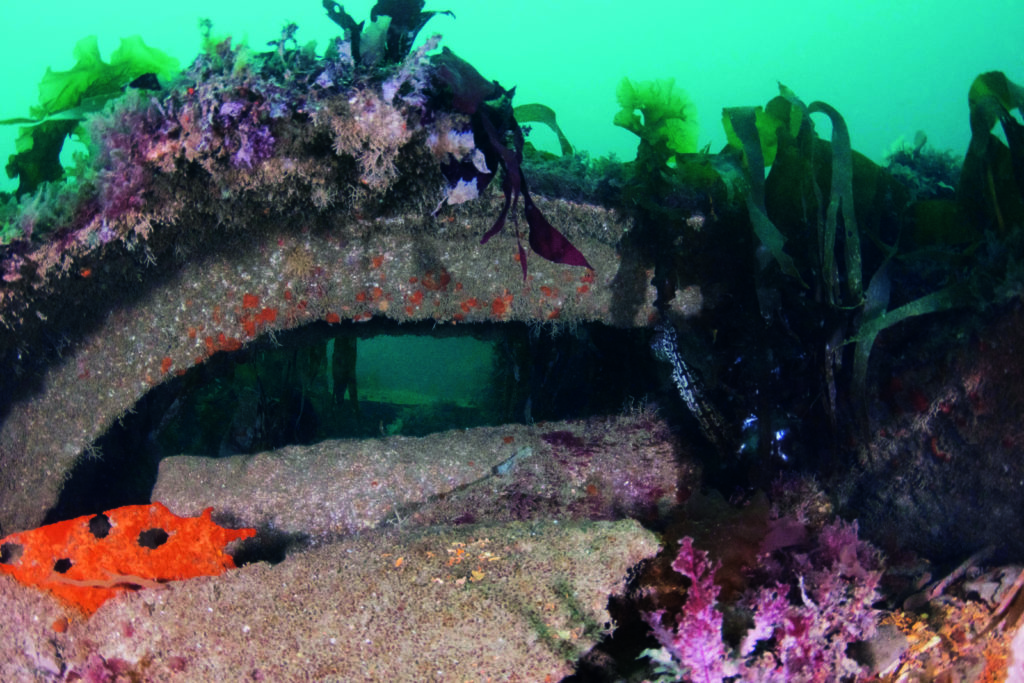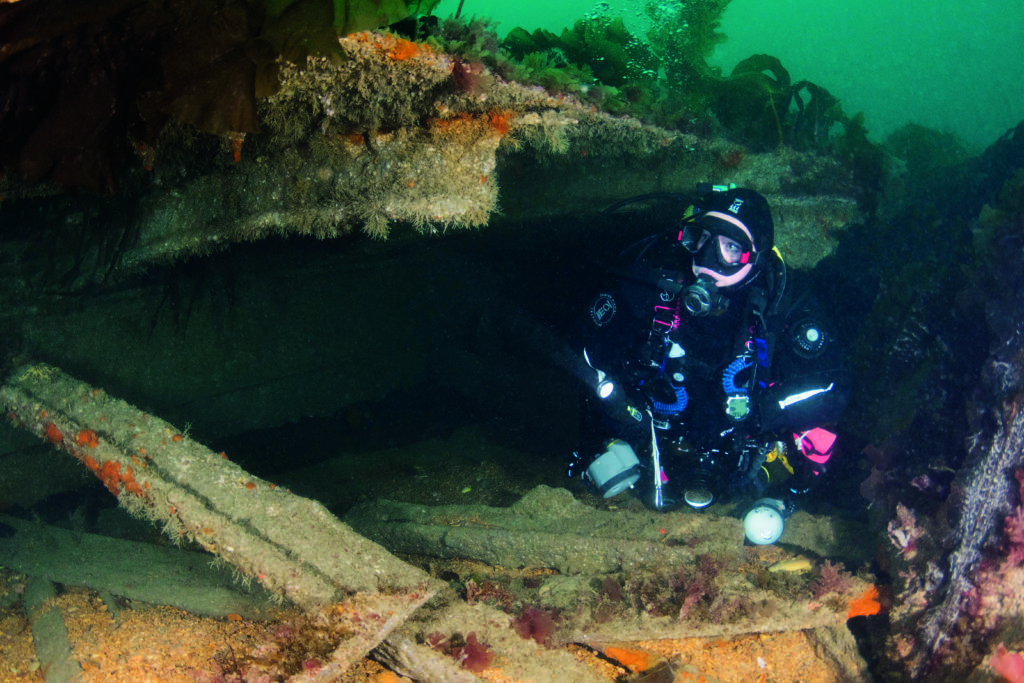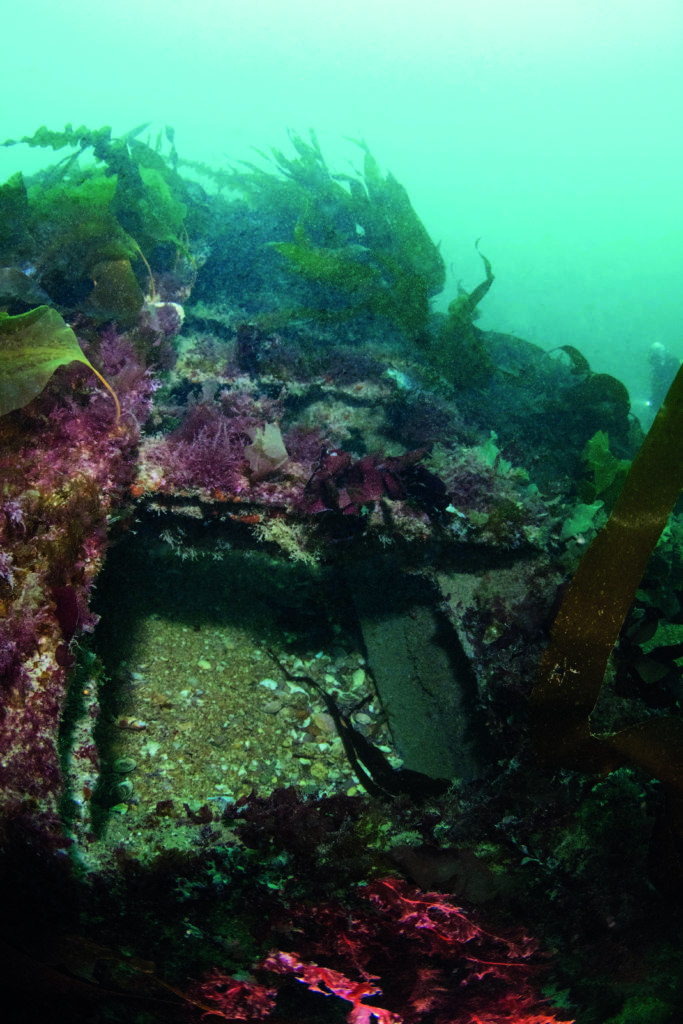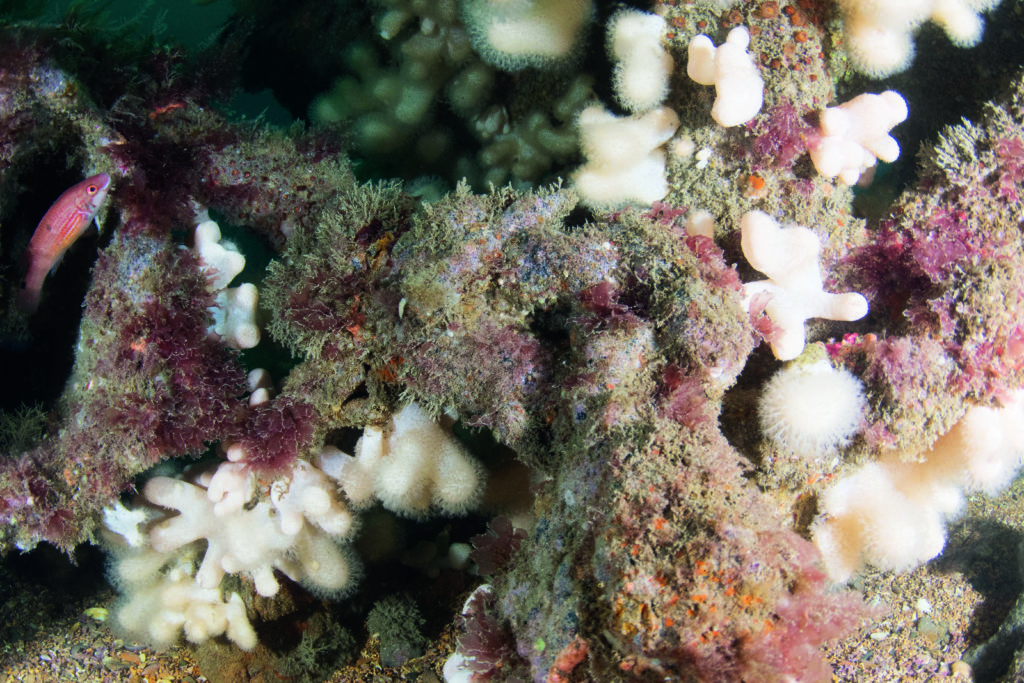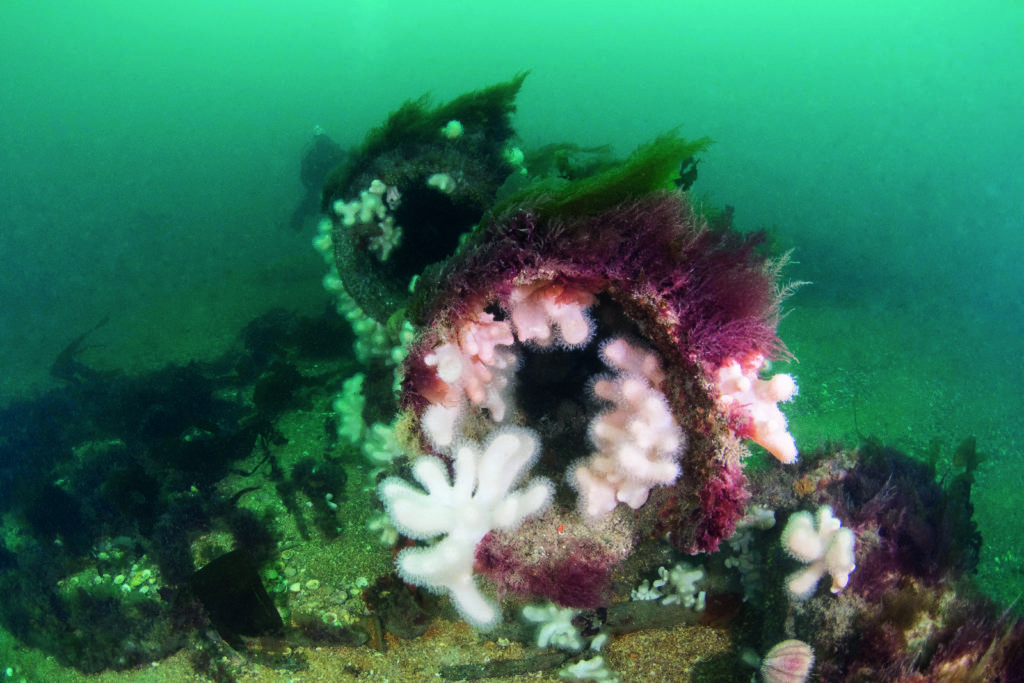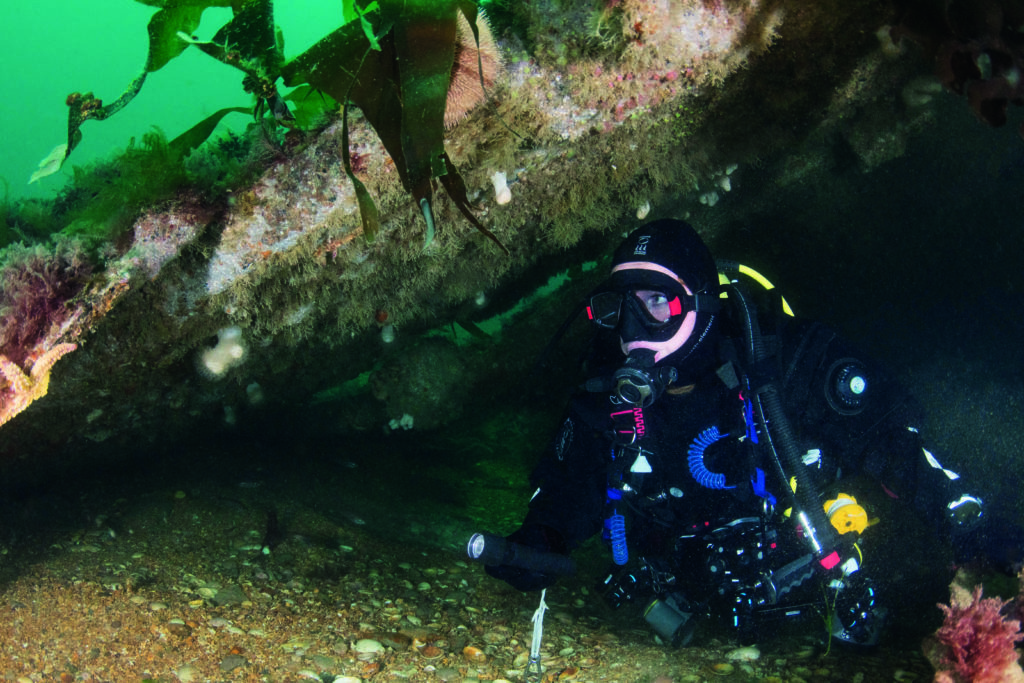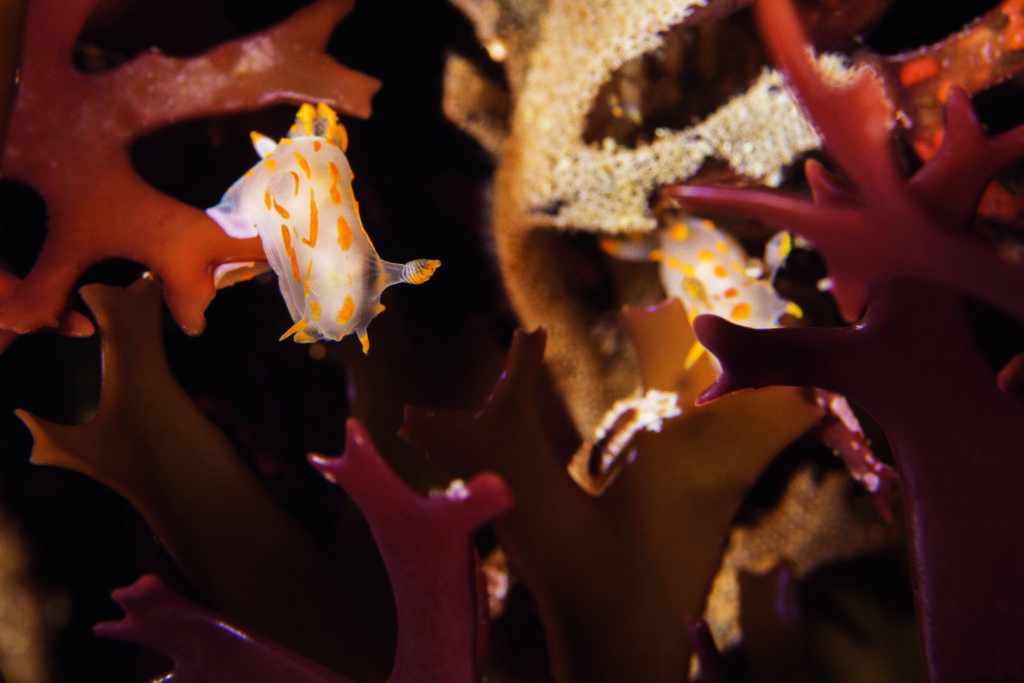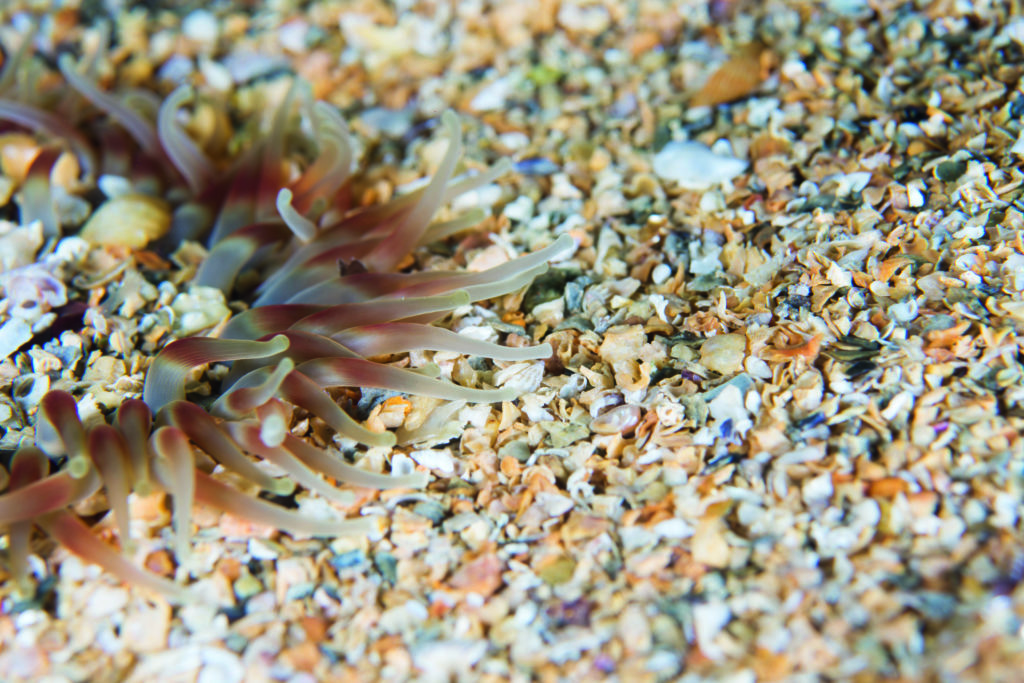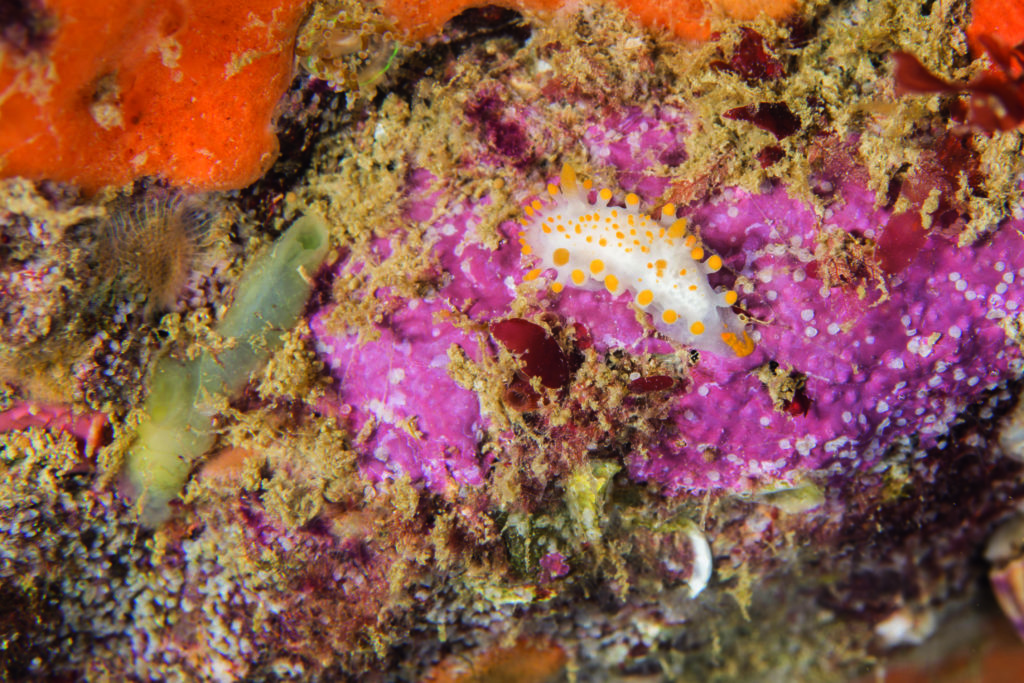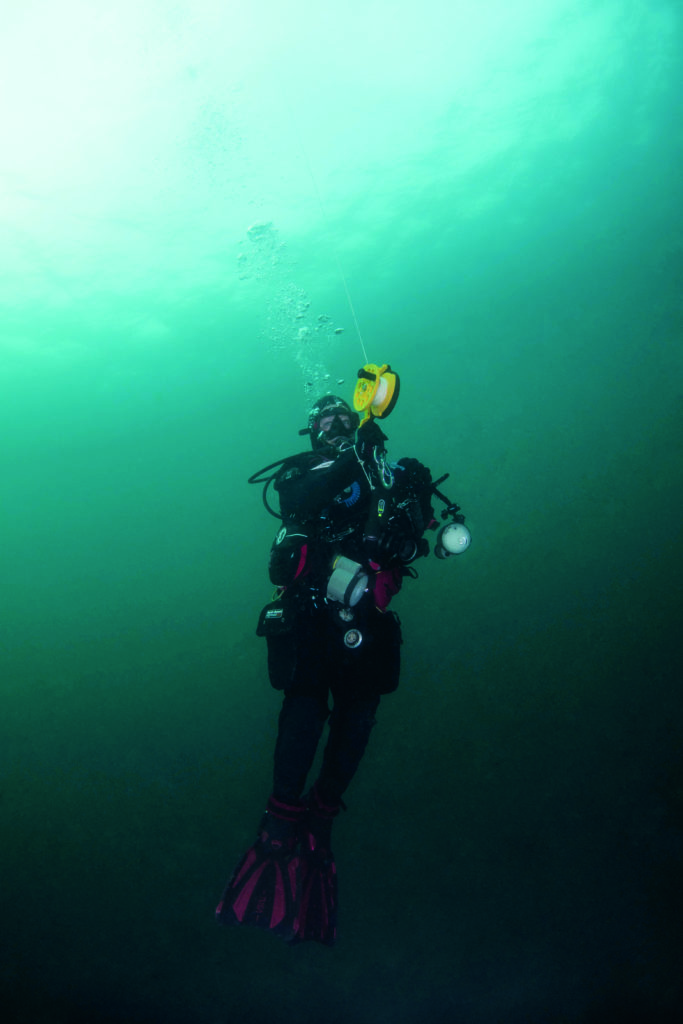ROISIN MADDISON reports on a shallow wreck tour just off the Cornish coast, and took the photographs
The Hera was an 85m four-masted German steel barque and the wreck lies east of Nare Head, just a couple of hundred metres from Gull Rock, at a depth of 15-18m. She sank before WW1 on 30 January, 1914, after getting caught in foul weather off the coast of Falmouth. Her captain became disorientated in the dark and crashed into Gull Rock, taking down with her what was then some £30,000-worth of nitrate that was being exported from Chile.
When she settled on the seabed only her masts could be seen sticking out of the water. The five surviving crewmen clung to them, taking turns to blow the single whistle they had between them until they were heard and the Falmouth lifeboat came to the rescue. Some 19 men were lost that night, and their bodies were later buried in Veryan churchyard.
Despite the Hera having sunk in relatively shallow waters over 100 years ago, the area is incredibly well protected, only really being affected by an easterly wind. Therefore the wreck is in surprisingly good condition, with plenty of structure still visible to explore.
Both sheltered and shallow, the Hera is perfect for dives for all levels of qualification and is a favourite wreck to dive when the rest of the sea is not looking inviting.
Arrival at the site
On one of our weekly Friday night dives out of Falmouth on Gary Fox’s dive boat the Cornish Pussy, we were very excited to hear that we would not be boat diving the Volney, or the Epsilon, or the Stanwood for the 100th time this year. Instead, we would be leaving the Falmouth channel and heading over to dive the Hera. I had dived the wreck many times before, but only ever on training night dives with students, so I was very excited to get on it with my camera and carry out some proper exploration.
From a hardboat is really the most relaxing way to dive. The wreck is a 40-minute ride out of Falmouth harbour, so the other divers and I had plenty of time to get our kit together and ensure that everything was ready to put on when we arrived. The water was flat-calm, the only disturbance being the wake of the boat.
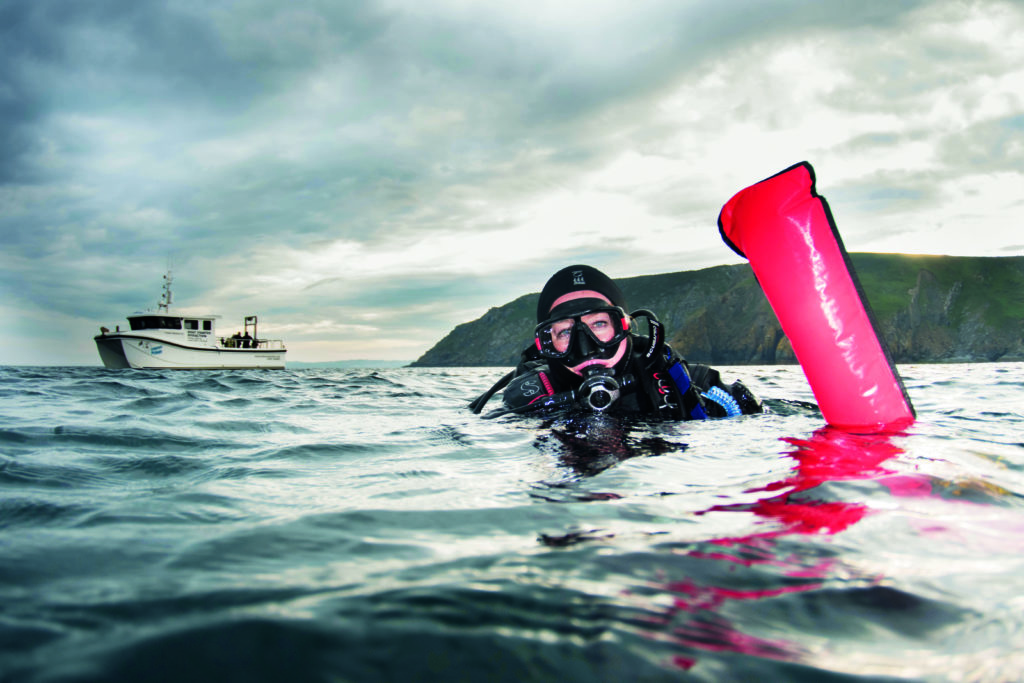
Standing at the back of the boat breathing in the fresh sea air, listening to the seagulls flying around us and watching Falmouth disappear into the distance, I knew that this was going to be a good dive.
Suddenly there was a flurry of movement as the iconic outline of Gull Rock appeared in front of us, and by the time Gary dropped the shotline into the water, everyone was sitting ready and eager to be first in.
Dive briefing
The Hera is accessible only by boat and a good skipper will drop the shot directly onto the wreck. As it is fairly compact and sitting on a bed of white sand, it is almost impossible to get lost. However, if you do stray too far from the shotline you can just send up your DSMB and the boat will come to you.
As the wreck is still fairly structured, it’s important you watch yourself on the metal skeleton. Stay clear, and if you are going to penetrate the wreck make sure that all your kit is neat and that you have a clear exit. The last thing you want is to become stuck or entangled.
Although it is a fairly sheltered dive, unless you want to be fighting a running tide it’s still best dived in slack water. Our dive was on a falling tide so there was a bit of a current, but not so much that we couldn’t stick with the wreck.
The dive
If you’re lucky, the skipper will drop the shotline right onto the A-frame, the most-iconic structural part of the Hera. Lying close to the remains of the steering quadrant, the A-frame is all that’s left of the stern. It stands about 5m off the bottom of the seabed and is a favourite with underwater photographers.
Another iconic feature is one of the engine wheels, still recognisable as a wheel and standing up out of the wreckage.
Wreckage isn’t the only thing to be found on this dive however, because the Hera has become a man-made reef, and every structure and pile of metal is covered in kelp, dead men’s fingers, plumose and jewel anemones.
Starfish cling to every uncovered section of wreckage, and crabs can be found hiding in any gaps or holes. Nudibranchs and sea hares feed on and in the kelp, and the hull is home to hundreds of ballan wrasse and pollack.
Four sections of “piping” can be found lying flat on the sand, leading you to the main section of wreckage. In fact these are the remains of the ship’s four masts, and span an incredible distance under the water.
This is where my buddy and I started our dive, before finding and spending most of our time exploring and sticking our heads into the upturned hull of the ship, which has created a tunnel that you can swim through.
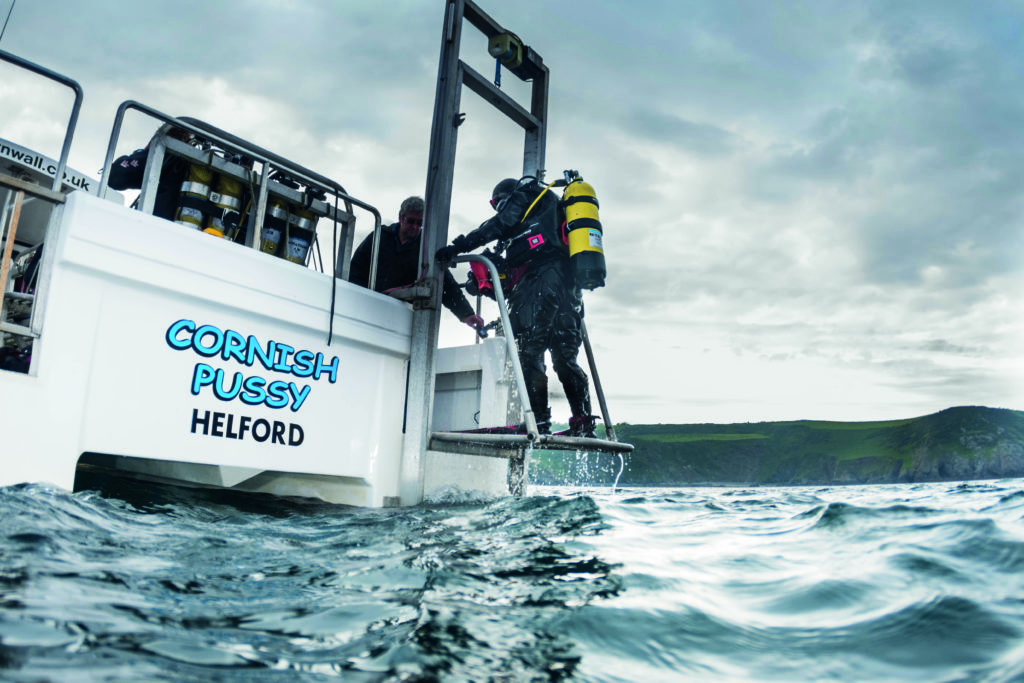
It is a very atmospheric part of the dive, as the light seeps into the hull through holes in the plating, lighting your way to the other side. Cornwall is an amazing place to live and dive, and we were incredibly lucky on our dive to have a lot of light and amazing 15m visibility – the perks of a spring heatwave and a sheltered dive-site, I suppose!
WHAT YOU NEED TO KNOW
Type of Dive: The Hera is a certified boat-dive – with high cliffs to either side, it is inaccessible from shore.
Depth: Expect 15-18m, depending on whether you’re diving at low or hide tide.
Marine Life: This varies depending on the time of year but generally increases once the water reaches above 10°C, when you can find starfish, edible and red velvet crabs, many different varieties of nudibranchs, dead men’s fingers, larger fish such as wrasse and pollack, and plumose and jewel anemones.
Seabed: Flat white sand, with bits of rusty and sharp wreckage, so be careful – you don't want to cut a hole in your drysuit!
Hazards: In good conditions, watch out for other dive-boats in the same area. Although the Hera site is protected in anything but an easterly wind, in less-than-fantastic conditions look out for strong currents or large waves. Beware sharp bits of metal and any nets or line, and ensure that you have a dive knife/net cutter in case. If you attempt to penetrate the wreck, ensure that all kit is neatly stowed and that you have a clear exit.
Also on Divernet: Above 18m: Diving The Menai Straits
